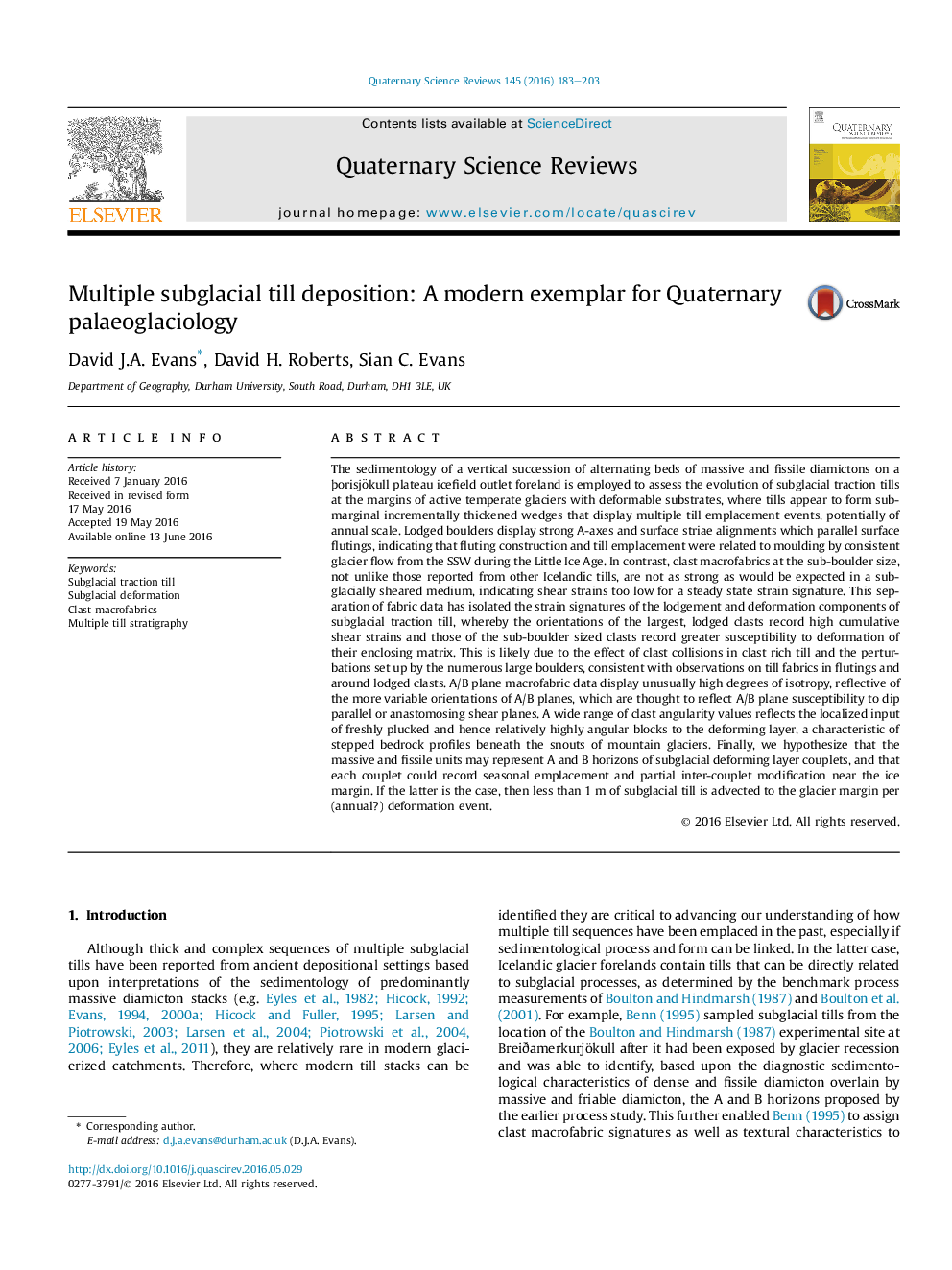| Article ID | Journal | Published Year | Pages | File Type |
|---|---|---|---|---|
| 6446040 | Quaternary Science Reviews | 2016 | 21 Pages |
Abstract
The sedimentology of a vertical succession of alternating beds of massive and fissile diamictons on a þorisjökull plateau icefield outlet foreland is employed to assess the evolution of subglacial traction tills at the margins of active temperate glaciers with deformable substrates, where tills appear to form sub-marginal incrementally thickened wedges that display multiple till emplacement events, potentially of annual scale. Lodged boulders display strong A-axes and surface striae alignments which parallel surface flutings, indicating that fluting construction and till emplacement were related to moulding by consistent glacier flow from the SSW during the Little Ice Age. In contrast, clast macrofabrics at the sub-boulder size, not unlike those reported from other Icelandic tills, are not as strong as would be expected in a subglacially sheared medium, indicating shear strains too low for a steady state strain signature. This separation of fabric data has isolated the strain signatures of the lodgement and deformation components of subglacial traction till, whereby the orientations of the largest, lodged clasts record high cumulative shear strains and those of the sub-boulder sized clasts record greater susceptibility to deformation of their enclosing matrix. This is likely due to the effect of clast collisions in clast rich till and the perturbations set up by the numerous large boulders, consistent with observations on till fabrics in flutings and around lodged clasts. A/B plane macrofabric data display unusually high degrees of isotropy, reflective of the more variable orientations of A/B planes, which are thought to reflect A/B plane susceptibility to dip parallel or anastomosing shear planes. A wide range of clast angularity values reflects the localized input of freshly plucked and hence relatively highly angular blocks to the deforming layer, a characteristic of stepped bedrock profiles beneath the snouts of mountain glaciers. Finally, we hypothesize that the massive and fissile units may represent A and B horizons of subglacial deforming layer couplets, and that each couplet could record seasonal emplacement and partial inter-couplet modification near the ice margin. If the latter is the case, then less than 1 m of subglacial till is advected to the glacier margin per (annual?) deformation event.
Keywords
Related Topics
Physical Sciences and Engineering
Earth and Planetary Sciences
Geology
Authors
David J.A. Evans, David H. Roberts, Sian C. Evans,
